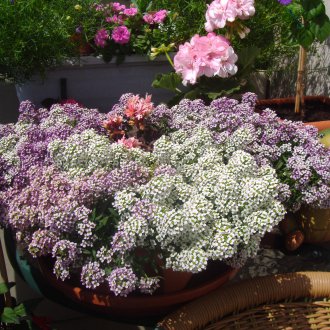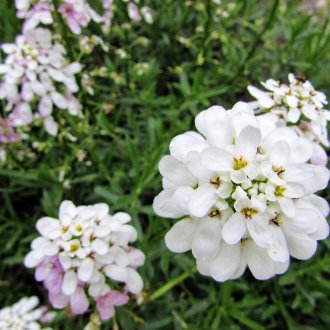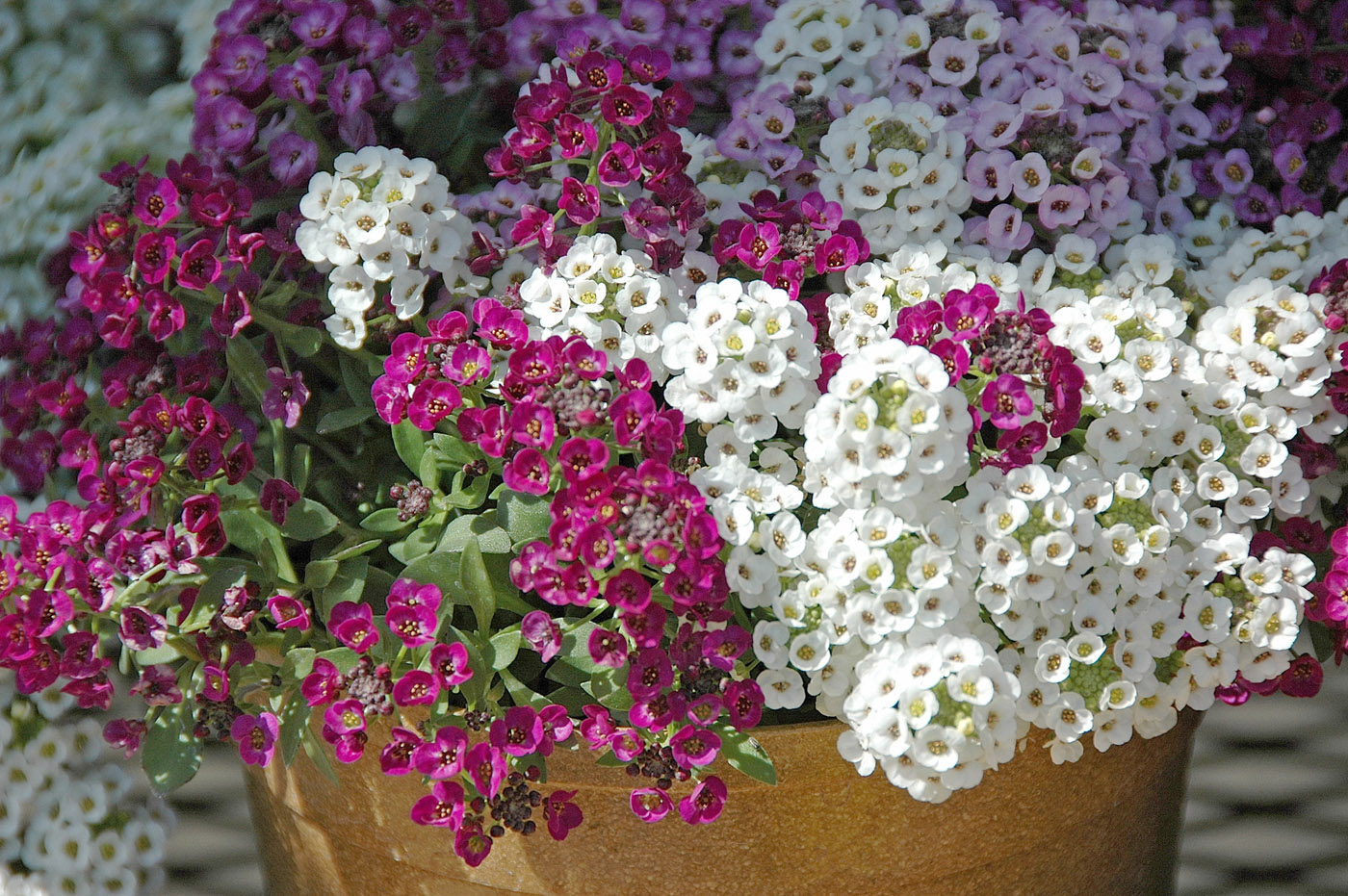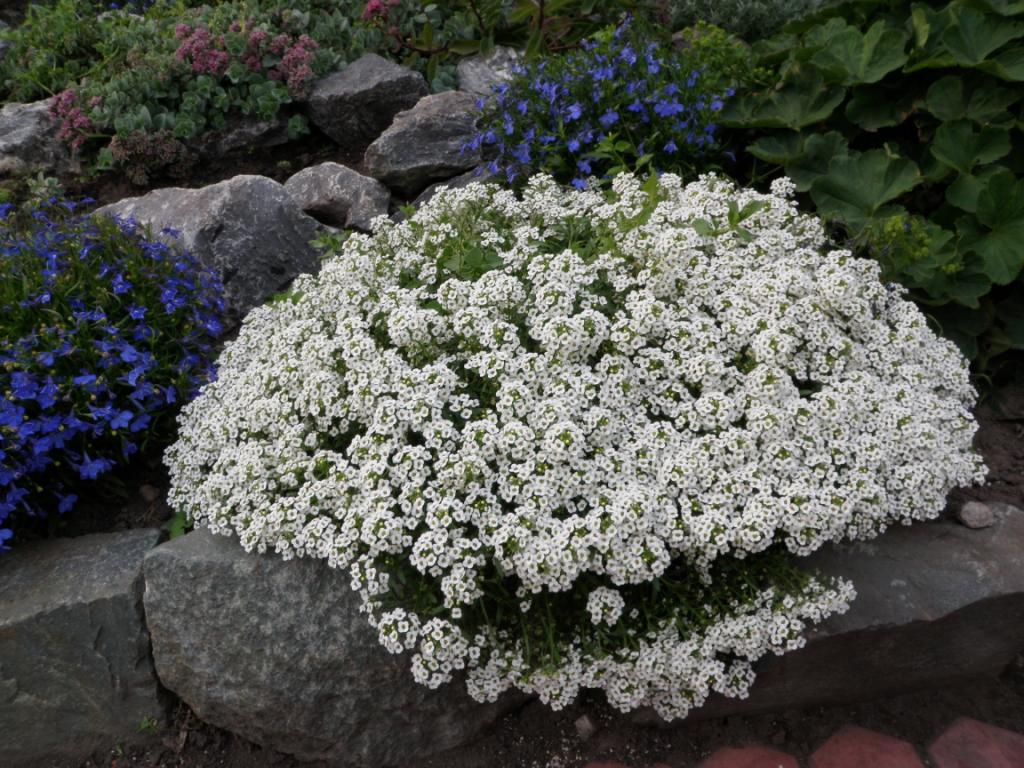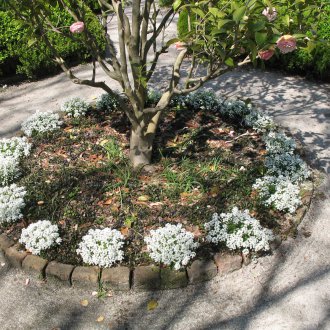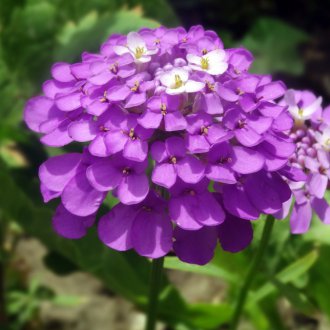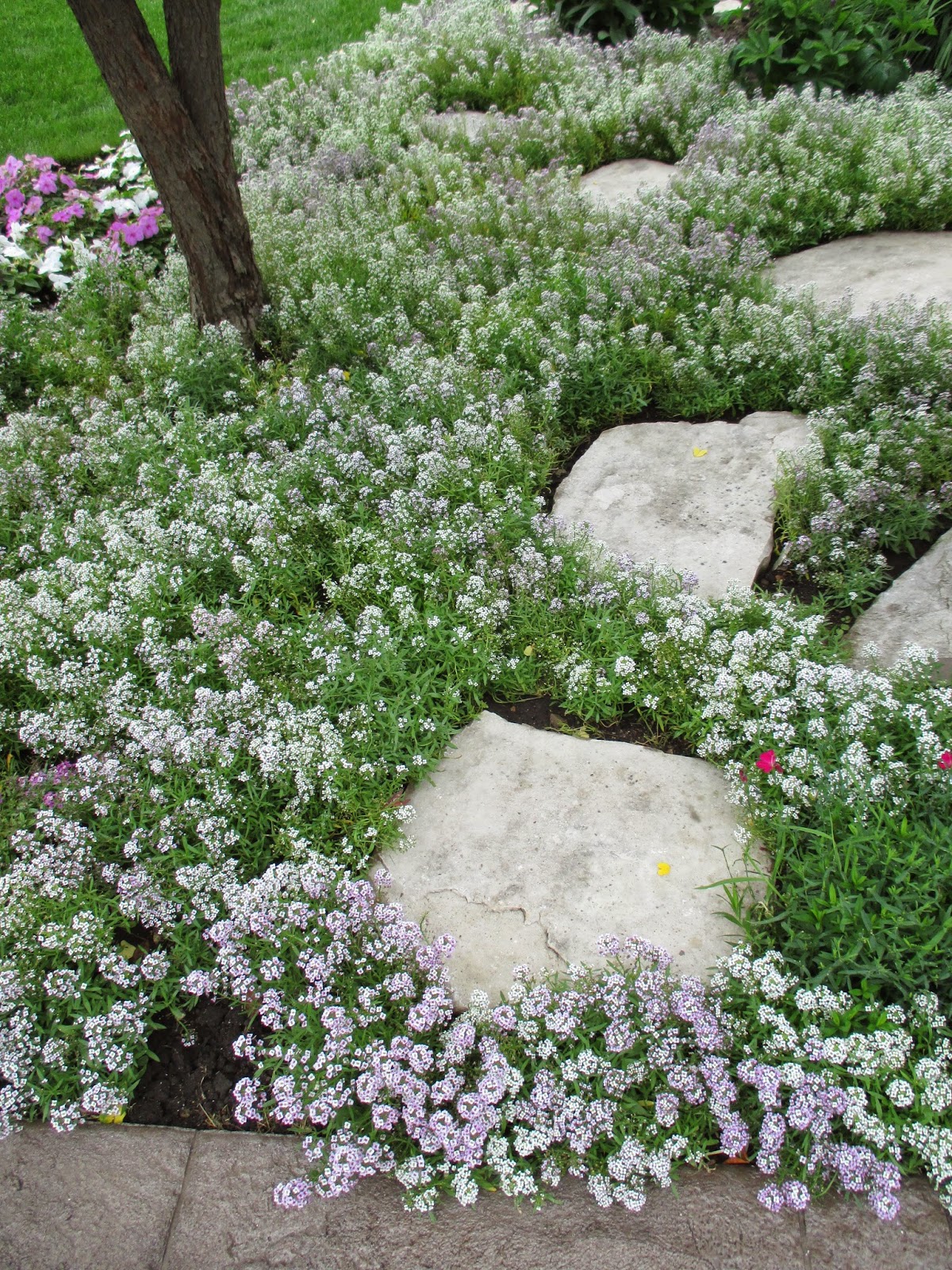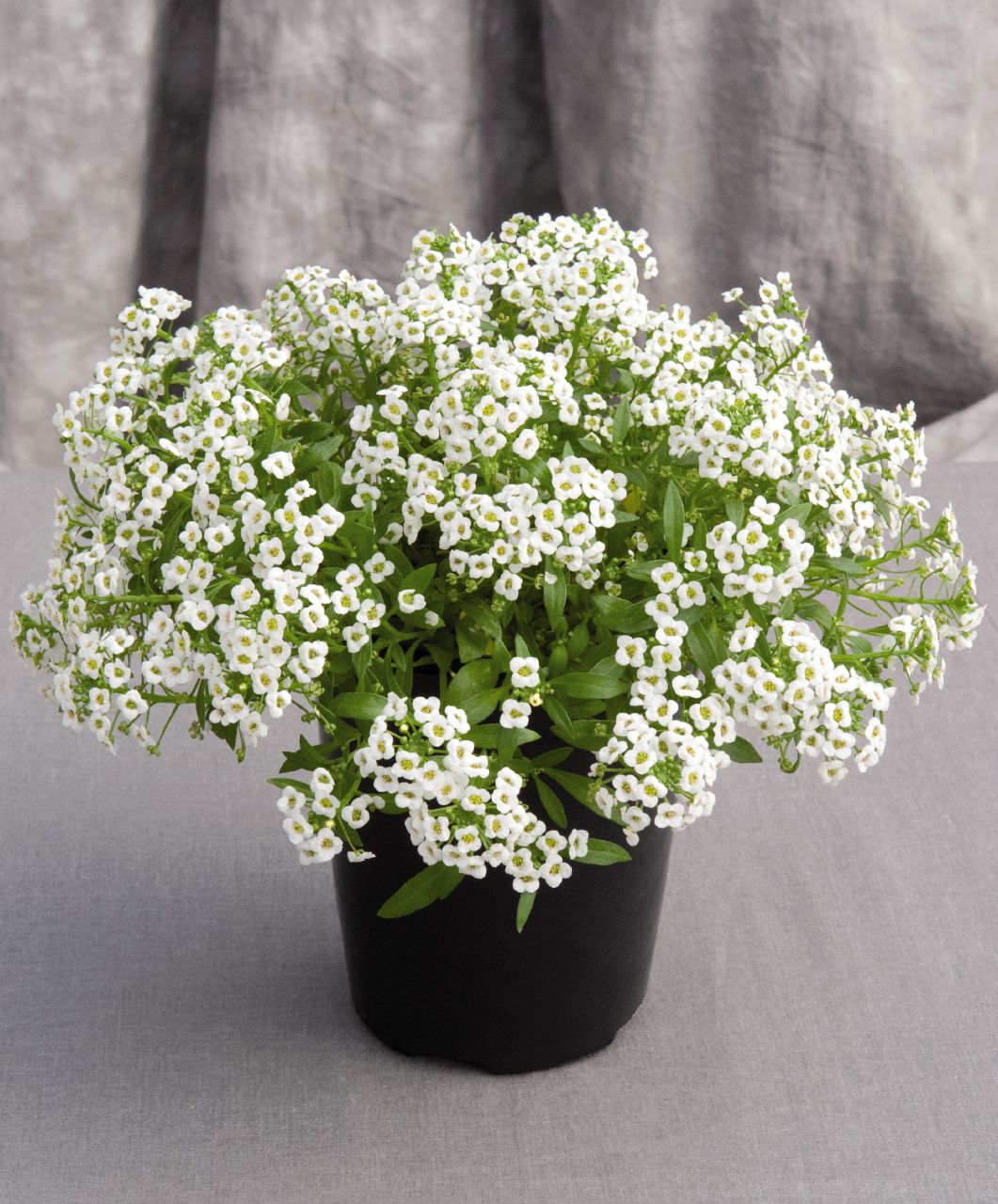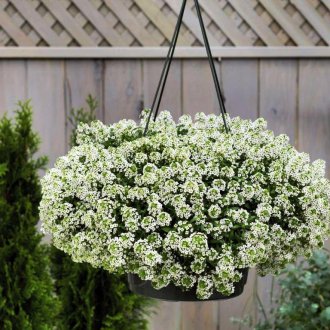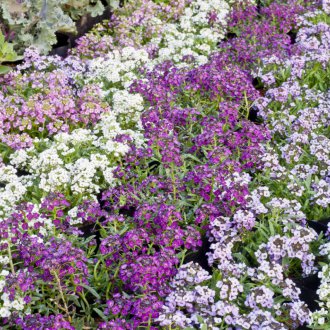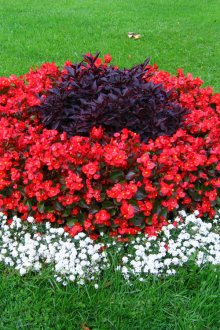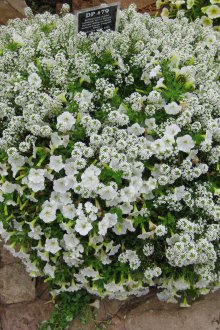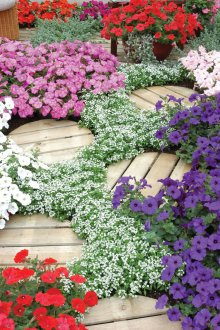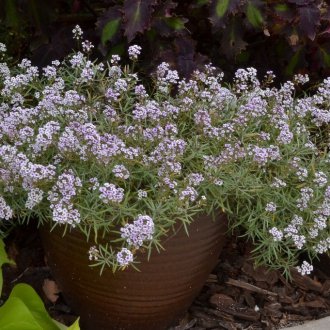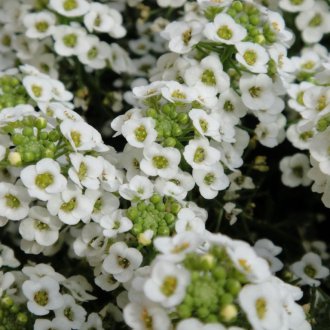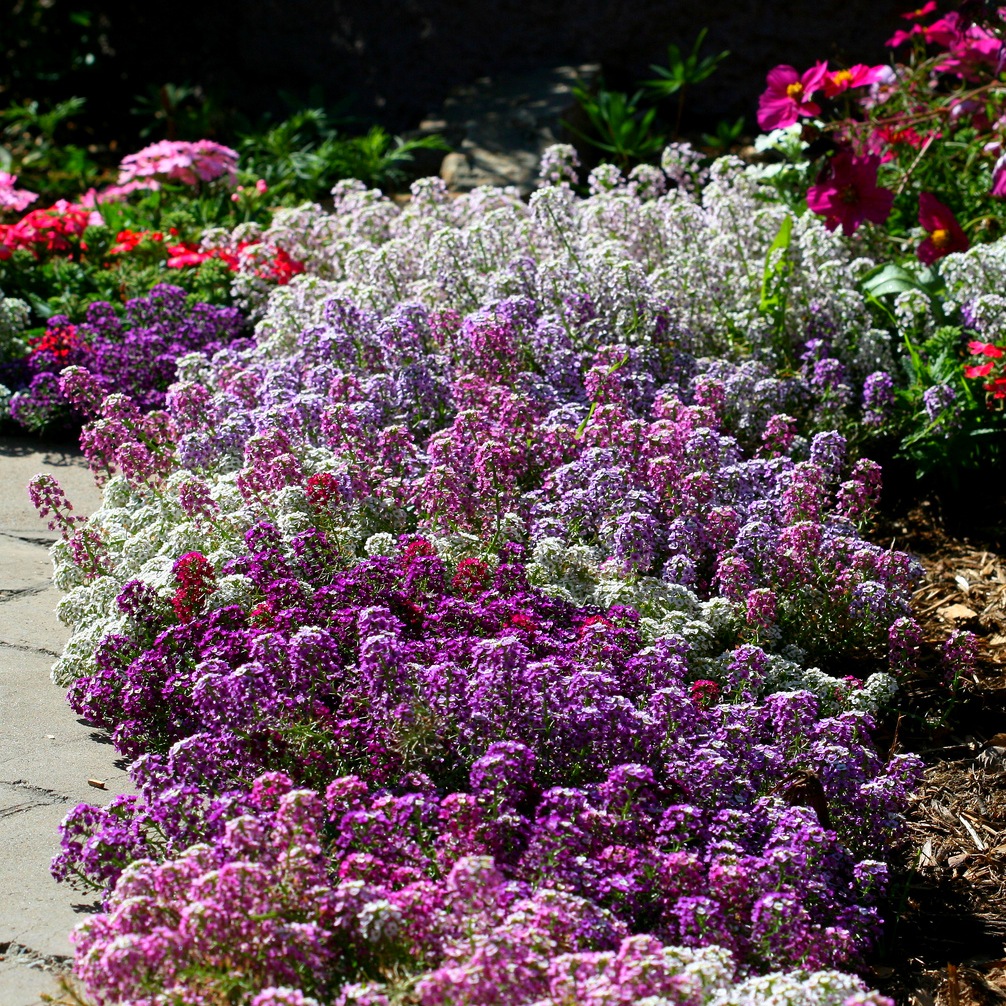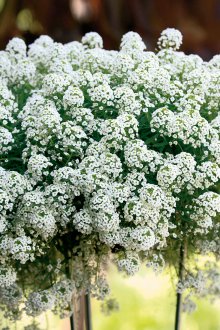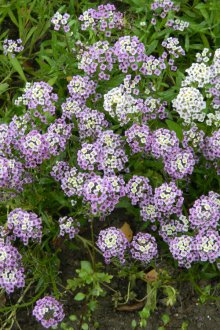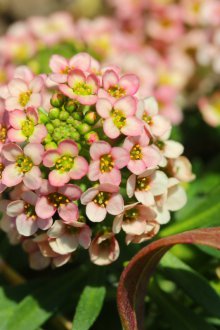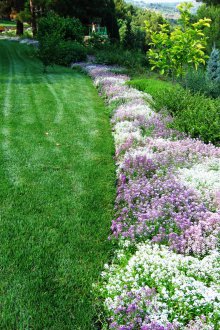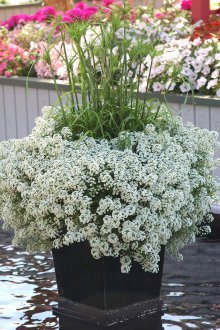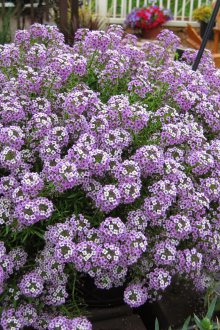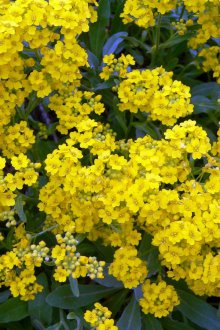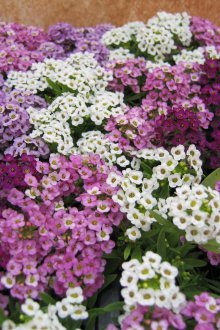Lobularia in the garden: a fragrant "carpet" with your own hands (25 photos)
Content
The groundcover lobularia plant conquered the hearts of many gardeners. It is unpretentious, blooms to the very frosts, multiplies with a gem and has a pleasant aroma. The modest, but exquisite beauty of the flowers goes well with the bright representatives of the flora, and mixborders and borders decorated with lobularia look amazing. How to properly plant and care for these magnificent flowers?
Garden Design
Garden designers prefer to use violet, white and mixed shades of flowers of this border culture for bordering lawns, paths and mixborders. They have a neutral color, so other annual and perennial flowers look amazing on their background. Relief flower beds: rockeries and rock gardens, will gain grooming and completeness if supplemented with miniature bushes, densely showered with flowers. The duo of lobularia looks spectacular with flowers of warm, saturated colors: marigolds, zinnia and nasturtium.
Use lobularia for landscaping balconies, terraces, patios - its honey aroma and spectacular appearance will appeal to any lover of the beautiful.
Popular varieties
The best varieties of plants are recognized as follows:
- Palette. The height of the plant reaches 10 cm, is distinguished by a diverse color of inflorescences: raspberry, pink, brown-red, lilac, white.
- Tiny Tim. Dwarf plant with white flowers.
- Wise Riesen. Large snow-white inflorescences.
- Easter Deep Rose. It is characterized by abundant flowering, the color of the petals is intense pink.
- Vylet Konigin. Large purple flowers.
- Rosie O’Day. The height of the bush is up to 10 cm, the color of the petals is pale pink.
- Easter Bonnet Pink. Compact bushes covered with light lilac flowers.
- Princess in Simple. The shoots are long, reach 35 cm, the flowers are pale lilac, the variety looks great in baskets and hanging flowerpots.
At first glance, the inflorescences may seem too modest, but the incredible aroma surrounding this plant will make everyone fall in love with it.
How to grow seedlings at home?
A beautiful thick carpet from lobularia is obtained when ready seedlings are planted in the ground, and more than a dozen plants need to be used. Annuals are propagated by seeds, they are sown in the soil in spring or autumn. Why do experienced flower growers prefer to plant seedlings, what are the advantages of this method? So this is:
- the possibility of a uniform planting, the occurrence of bald spots is excluded in case seeds have not sprouted;
- early and long flowering, the first flowers appear in May;
- excludes the influence of spring frosts.
Growing seedlings from seeds is the most effective way to get beautiful and healthy plants. What needs to be done for this?
Sowing seeds
For sowing, seeds are used that are stored for no more than 3 years under suitable conditions; they are the ones with the highest germination capacity. The first sprouts appear after 10-15 days, if the container with soil is stored in suitable conditions.As containers for growing seedlings, you can use plastic containers, they are mini-greenhouses in which a greenhouse effect is created. The soil is light with good air exchange; these properties can be given to it by river sand or peat. Growing lobularia from seeds requires some knowledge. For example, before sowing, the soil should be moistened and a solution of manganese added for disinfection.
Only after this, shallow grooves are drawn, seeds are sown on the soil surface, a small layer (not more than 0.5 mm) of sand is sprinkled on top. From above, the container is covered with a transparent lid and sent to a bright, warm place. Seedling care consists in daily airing, spraying the soil from the spray gun in case it has dried up. Overmoistening should be avoided.
The best time for sowing is the first half of March, since it is at this time that daylight hours increase and it is likely that the seedlings will grow healthy and strong.
You can sow seeds on the surface of the snow, it will melt the seeds into the soil to the desired depth, and as a result of short-term cooling, stratification will occur, which ensures rapid seed growth.
Seedling Care
After the first seedlings, seedlings need constant care. If there are too many seedlings, you can thin them, leaving 2-3 pieces. The distance between the seedlings is about 10 cm. Another way is to dive - transplanting each seedling into a separate cup or pot, you can take a few pieces in case any one does not take root. Well, to make growing perennial plants a pleasure, it is better to plant them in the open ground after May 10, when the risk of morning spring frosts is minimal.
Landing
Planting lobularia is carried out in groups to create a uniform floral coating; caring for a perennial plant will bring only pleasure if you choose a sunny area, unshaded by the crowns of trees, with dry fertilized soil. Flowers perfectly respond to the heat emanating from heated bricks and stones, so they grow well near a paved walkway or border.
Before planting, the soil is dug up, peat or compost is introduced into it, then the following procedure is followed:
- We dig holes, observing an interval of 40-50 cm. The flower grows well, so it is not worth planting more closely.
- We take out each plant from the glass, trying not to damage the earthen lump, and plant one in each hole.
- We fall asleep with earth and water abundantly.
- Mulch with peat or humus. Mulch prevents weed growth and protects the soil from excessive drying.
6-7 weeks after planting, with careful care, the first flowers will appear on the plant.
Direct sowing in soil
Some gardeners prefer to sow seeds in the ground. This method of growing a perennial plant is simpler, but the bushes in this case can suffer from various diseases. Sown seeds at the end of April or in November. Before this, the earth is dug up, loosened, fertilizers are introduced into it.
Lobularis care
The plant is not quite picky, so growing and caring for it does not cause much trouble. Caring for a perennial beauty comes down to the most common measures.
Watering
Water the plant as needed, abundant watering is necessary for him only in the period of drought. The culture does not tolerate excess moisture in the soil, so you need to moisten the area if the top layer is 3-4 cm dry. This is easy to check by peeling off a lump of earth.
Loosening and top dressing
For the best penetration of air and moisture into the soil, you need to take care of systematic cultivation. Caring for a plant is unthinkable without fertilizing. During the growth period, nitrogen fertilizer is applied, and before flowering - complex.The optimal amount of fertilizing is 2-3 times per season.
A haircut
Cutting shoots at 5-6 cm follows after the first flowering wave. It will provide not only a well-groomed look, but also the further formation of new buds. This is one of the rules for care, which cannot be applied to all cultures, well, and lobularia after shortening the shoots will please with lush flowering until the frosts.
Wintering
Even with proper care, lobularia will not survive the harsh winter in regions where the air temperature drops below -15 ° C, so in order to preserve the culture it is advisable to collect seed in the fall. After tearing off dry inflorescences, they should be rubbed over a cloth or paper and separate the seeds from large dust. They are aged for several days in a dry, ventilated room, then packaged in paper bags and stored until spring.
If in the region the temperature in winter does not fall below the limit, then in autumn the bushes are covered with a layer of dry leaves, and in winter - a snowdrift is thrown over the leaves. Before wintering, the bush is not cut, as this can lead to the death of the plant. From dried leaves and last year's inflorescences, immature shoots are disposed of in the spring.
What is lobularia sick with?
The cruciferous flea is the most insidious enemy, which is dangerous for the entire Cabbage family and, in particular, for lobularia. It is very difficult to lime it, and only healthy adult plants will survive after treatment. The insect repellent is made from vinegar essence and water in a proportion of 1 spoon per 10 liters.
Florists often encounter another nuisance: eating leaves and flowers with a caterpillar. A tobacco infusion is used against it, in which laundry soap or a decoction of pharmacy chamomile is added.
The following drugs are effective against butterfly whites, cabbage moths: Lepidocide, Entobacterin.
Diseases such as brown rot, powdery mildew, or viral mosaic can occur due to excessive watering. The following remedies will prevent the development of fungal infections:
- The order;
- Topaz;
- Oxychom;
- copper chloride.
It should be noted that if the plant is infected with a viral mosaic, it should be disposed of immediately, since this disease is incurable.
Lobularia grows with a lush carpet and forms unusual spherical bushes. Florists appreciate not only the decorative qualities of a plant, marine lobularia, for example, is used in folk medicine as a remedy that has a laxative and diuretic effect. Bouquets of dried flowers can be used as an air fragrance, and a pillow filled with petals will relieve insomnia. Well, in order to grow this charming flower in your flowerbed, you should learn from the experience of flower growers and take advantage of their valuable tips.
